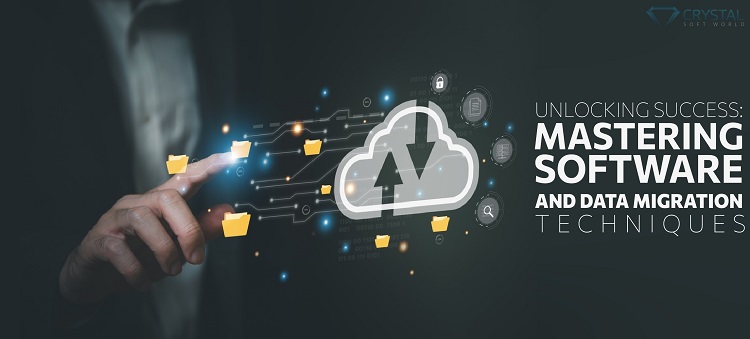Unlocking success: mastering software and data migration techniques.
In the ever-evolving world of technology, companies always look for ways to increase productivity and stay competitive. A critical component of this endeavour is the seamless migration of data and applications from antiquated platforms to contemporary ones. In addition to ensuring company continuity, a successful software and data migration creates chances for increased performance, scalability, and innovation. This blog post will explore the essential tactics and methods to handle data migration and software successfully.
- Recognizing the Need for Migration:
They understand why organisations undertake software and data migration journeys before delving into the techniques. Legacy systems often require updates, but they may need help to support the evolving needs of businesses. Additionally, outdated technologies can pose security risks and hinder agility. By migrating to modern platforms, organisations can take advantage of the latest advancements, improve security, and streamline operations.
- Principal Difficulties in Migration:
Despite all the advantages, organisations face substantial software and data migration obstacles. Data integrity problems, downtime worries, compatibility issues, and the possibility of data loss are typical obstacles. Developing a strong migration strategy begins with acknowledging these obstacles.
- Developing a Complete Migration Strategy:
An effective relocation starts with a clearly stated plan. This entails evaluating the current systems in-depth, comprehending dependencies, and spotting potential obstacles. Get input from important stakeholders early to ensure the migration plan aligns with corporate objectives.
1. Data Assessment and Cleanup: Start by thoroughly analysing the data that is currently accessible. Determine which data is trivial, outdated, or redundant (ROT) and create a plan to purge the database. Doing this decreases the amount of data needed; only essential and pertinent data is moved.
2. Choose the Right Migration Strategy: Migration strategies include the "big bang" approach, phased migration, and parallel adoption. The choice depends on business continuity requirements, budget constraints, and the systems' complexity. Carefully evaluate each strategy and select the one that aligns best with your organisation's goals.
3. Ensure Data Security and Compliance: Security is paramount in any migration process. Implement robust encryption mechanisms to protect sensitive data during transit. Additionally, ensure the migration adheres to regulatory compliance standards relevant to your industry. This mitigates legal risks and builds trust with customers and stakeholders.
4. Testing and Validation: Rigorous testing is a linchpin in the success of migration. Develop a comprehensive testing plan, including functionality, performance, and security testing. Conduct simulations and validate the migrated data against predefined benchmarks to ensure accuracy and reliability.
5. User Training and Support: A successful migration extends beyond technical aspects to encompass the human element. Provide ample training to end-users on the new software and data environment. Establish a robust support system to address issues promptly, minimising disruptions and ensuring a smooth transition.
6. Post-Migration Evaluation: Analyse the new system's performance in detail when the migration is finished. To find out any problems or areas that need improvement after a move, get input from users and stakeholders. This ongoing feedback loop is key in process improvement and migrating environment optimization.
- Interpretation:
It takes careful preparation, execution, and flexibility to become proficient in software and data migration strategies. Organisations may prosper in a changing digital environment and maintain business continuity with a successful migration. By comprehending the obstacles, developing an all-encompassing strategy, and using tested methodologies, enterprises can unleash the complete possibilities of contemporary technologies, propelling prosperity in a constantly changing global landscape.





